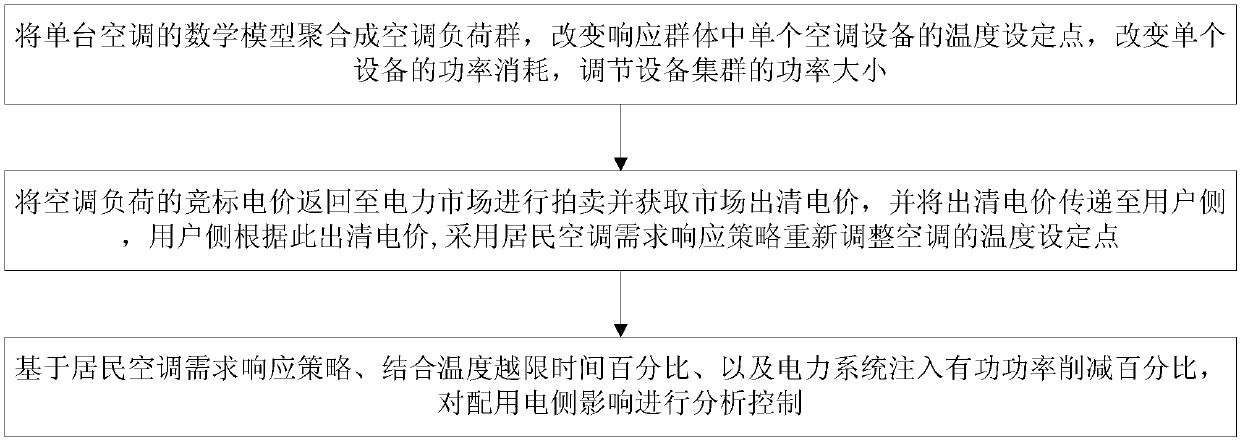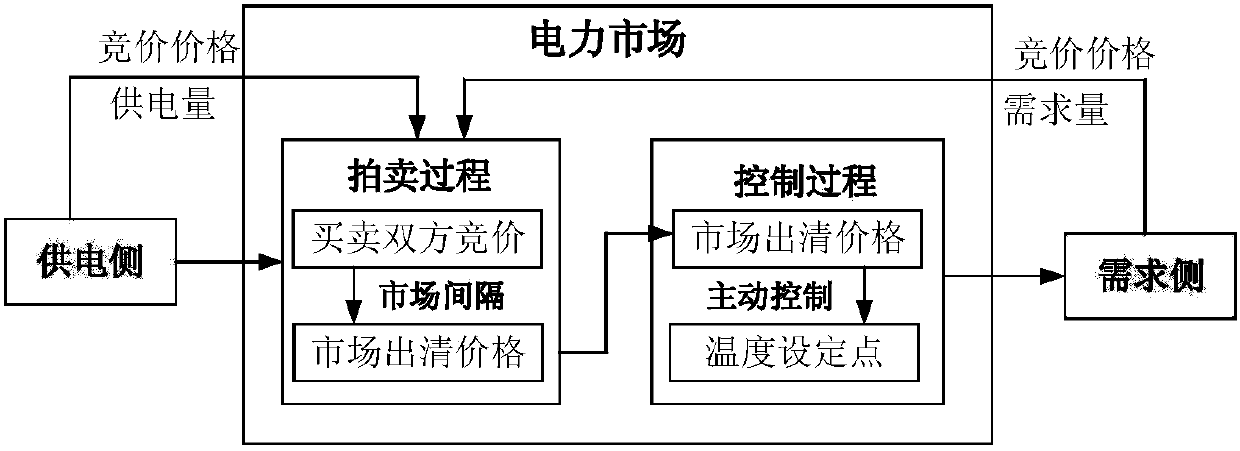Control method for resident air conditioner demand response strategy and influence thereof on distribution and consumption sides
A demand response and control method technology, applied in data processing applications, instruments, calculations, etc., can solve the problems of high noise, insufficient quantitative analysis of demand response, etc., and achieve the effect of reducing the expenditure of residents' electricity bills
- Summary
- Abstract
- Description
- Claims
- Application Information
AI Technical Summary
Problems solved by technology
Method used
Image
Examples
Embodiment 1
[0046] In order to realize the quantitative evaluation of the effect of demand response, and to have a better guiding value for the power system’s peak-shaving and valley-filling and saving electricity price expenditures of power users, the embodiment of the present invention provides a residential air-conditioning electricity price demand response strategy and its impact on For the control method of the impact on the power distribution side, see figure 1 , the method includes the following steps:
[0047] 101: Aggregate the mathematical model of a single air conditioner into an air conditioner load group, change the temperature set point of a single air conditioner in the response group, change the power consumption of a single device, and adjust the power of the device cluster;
[0048] 102: Return the bidding price of the air-conditioning load to the electricity market for auction and obtain the market-clearing electricity price, and pass the clearing electricity price to t...
Embodiment 2
[0061] Combine below Figure 1-Figure 4 , the specific calculation formula further introduces the scheme in embodiment 1, see the following description for details:
[0062] 201: Mechanism modeling of residential air conditioners;
[0063] (1) Mathematical model of a single air conditioner
[0064] The ETP (Equivalent Thermodynamic Parameters) model is used to describe the thermodynamic dynamic process of residential air conditioners. The ETP model takes into account the heat exchange process between outdoor air and indoor air, indoor substances and indoor air, and uses heat capacity and thermal resistance to represent the heat exchange process. losses and thermal energy storage.
[0065] The state space equation of the ETP model is as follows:
[0066]
[0067]
[0068]
[0069]
[0070]
[0071]
[0072] in, is the differential matrix of temperature; A is the equivalent thermal parameter matrix; x is the temperature vector; B is the matrix representing...
Embodiment 3
[0108] Combine below Figure 5-Figure 7 , carry out feasibility verification to the scheme in embodiment 1 and 2, see the following description for details:
[0109] Figure 5-Figure 7 It reflects the air-conditioning temperature set point, indoor temperature and feeder injected active power under the two scenarios of implementing and not implementing the residential air-conditioning demand response strategy.
[0110] That is, no demand response control is called no electricity price control, and the implementation of demand response control based on real time price (real time price, RTP) is called RTP control. Figure 5-Figure 7 It can be seen from the results that after the implementation of the residential air-conditioning demand response strategy, the temperature setting value of the residential air-conditioning has increased, and the room temperature has also increased. The impact on user comfort is relatively small.
[0111] After the implementation of the residential...
PUM
 Login to View More
Login to View More Abstract
Description
Claims
Application Information
 Login to View More
Login to View More - R&D
- Intellectual Property
- Life Sciences
- Materials
- Tech Scout
- Unparalleled Data Quality
- Higher Quality Content
- 60% Fewer Hallucinations
Browse by: Latest US Patents, China's latest patents, Technical Efficacy Thesaurus, Application Domain, Technology Topic, Popular Technical Reports.
© 2025 PatSnap. All rights reserved.Legal|Privacy policy|Modern Slavery Act Transparency Statement|Sitemap|About US| Contact US: help@patsnap.com



